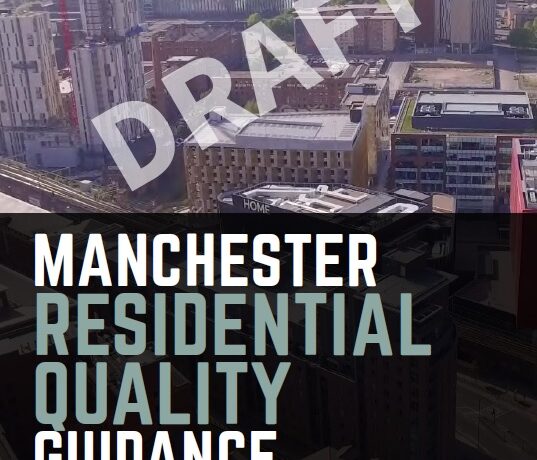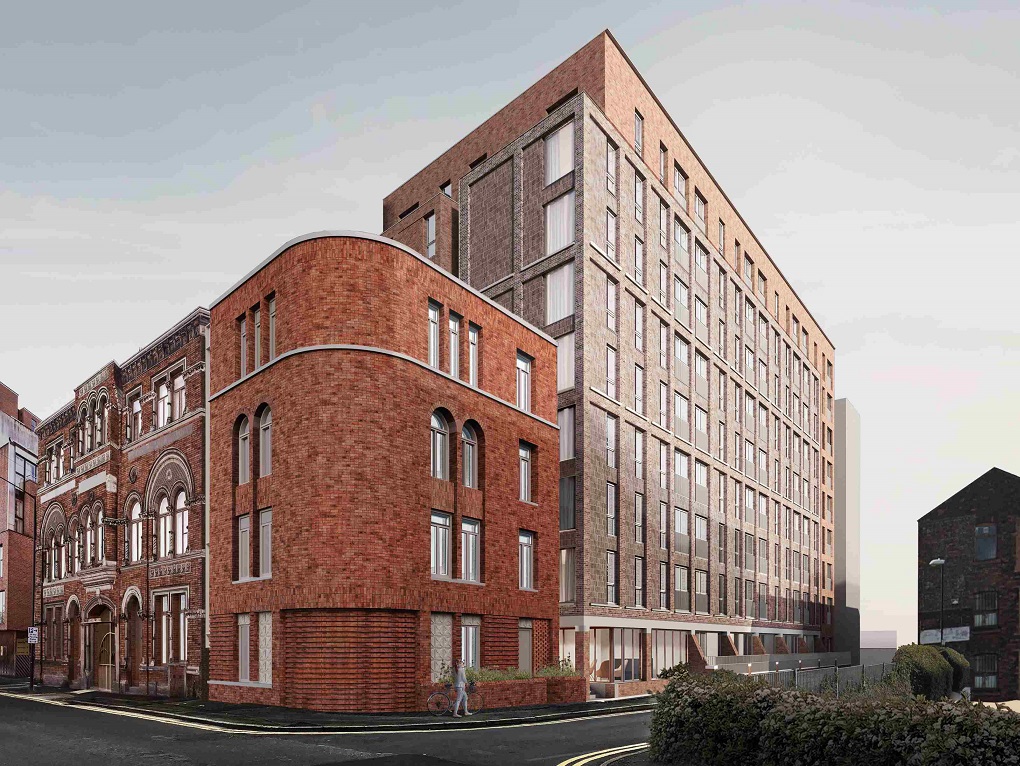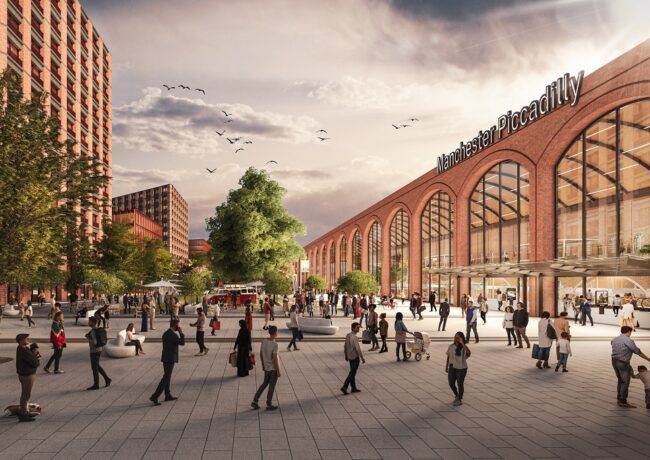Hodder: Design guidance will push developers to excel
Manchester City Council has approved the design and quality guide for all new housing in the city; a 140-page document shaped by a sounding board chaired by architect Stephen Hodder.
The first draft of the Manchester Residential Quality Guidance was approved by the council’s executive in June, and was then put out to public consultation until October.
The guidance specifies that it “is not a substitution for design talent and does not intend to impose any architectural styles or particular tastes. Equally this guidance should not replace or stifle innovation.”
Space standards within homes should comply with the Nationally Described Space Standards as a minimum. This means that a one-bedroom flat for a single occupier must be at least 430 sq ft.
Floor-to-ceiling heights of 2.5m are “strongly encouraged in all habitable areas”, with larger windows with an aspect to the sky and direct views to the outside. Single-aspect, North-facing accommodation should be avoided.
The document details corridor widths and lengths, lifts, the distance between buildings and the size of private external amenity space.
A sounding board made up of senior members of the Manchester property community chaired by architect Stephen Hodder, managing partner of Hodder+Partners, was brought together to develop the draft standards guide, providing advice on planning, urban design, placemaking and architecture.
Following the approval of the guidance, Hodder said: “From its inception, the guidance was pitched to push developers to excel, to deliver housing that residents will be proud of and to wholesale change the approach to new housing in the city.
“Prodigious home building should not mean a loss of quality, and through this guidance we hope to not only ensure that, but to push the boundaries of design for all new homes.”
The document looks at nine components:
Make it Manchester: developers must understand the city’s unique character, heritage old and new, density and scale in various parts of the city and appreciate how new homes will fit in to what’s already there
Make it bring people together: new homes must encourage a sense of community and neighbourliness, offering a mix of tenures to promote a mix of people
Make it animate streets and spaces: understand the relationship between new homes and its environment and create public space
Make it easy to get around: make sure developments have good transport links, along with good walking and cycling provision
Make work with the landscape: development should improve the connection with the local environment with improved biodiversity, as well as greening and water schemes
Make it practical: dealing with waste, car parking, bike storage and visitors should be made as easy as possible
Make it future proof: design must anticipate the impacts of climate change and extreme weather with efficient design and adaptability
Make it a home: sufficient space, natural light, privacy and storage are essential for people to settle down and flourish
Make it happen: ensuring proposals are delivered, to a high quality, with high design standards and high sustainability
The Manchester Residential Quality Guidance document can be found here





Manchester, like the rest of the UK, has an ageing population reflected in the Manchester Age-Friendly City WHO status. References are made several times in the document to the ageing population but there could be more detail provided.
The ‘Housing our Ageing Population Panel for Innovation’ (HAPPI) Report (2009) and HAPPI2 (2012) both address housing and the built environment for older people and has been very influential in the sector .
We all benefit from an easily understood built environment. The principles of designing for people with dementia is integral to the Governments ‘dementia friendly communities’ policy.
But there is no reference to either of these; the Manchester residential quality guidance document, as it stands, is a missed opportunity to positively address the needs of an ageing population through the design of flexible and suitable housing, helping to creating sustainable and balanced communities.
By Damian Utton
And how would Mr Hodders residential scheme for Renaker stack up with the guidelines? It would be good to see how principles were adhered to.
By Stuart